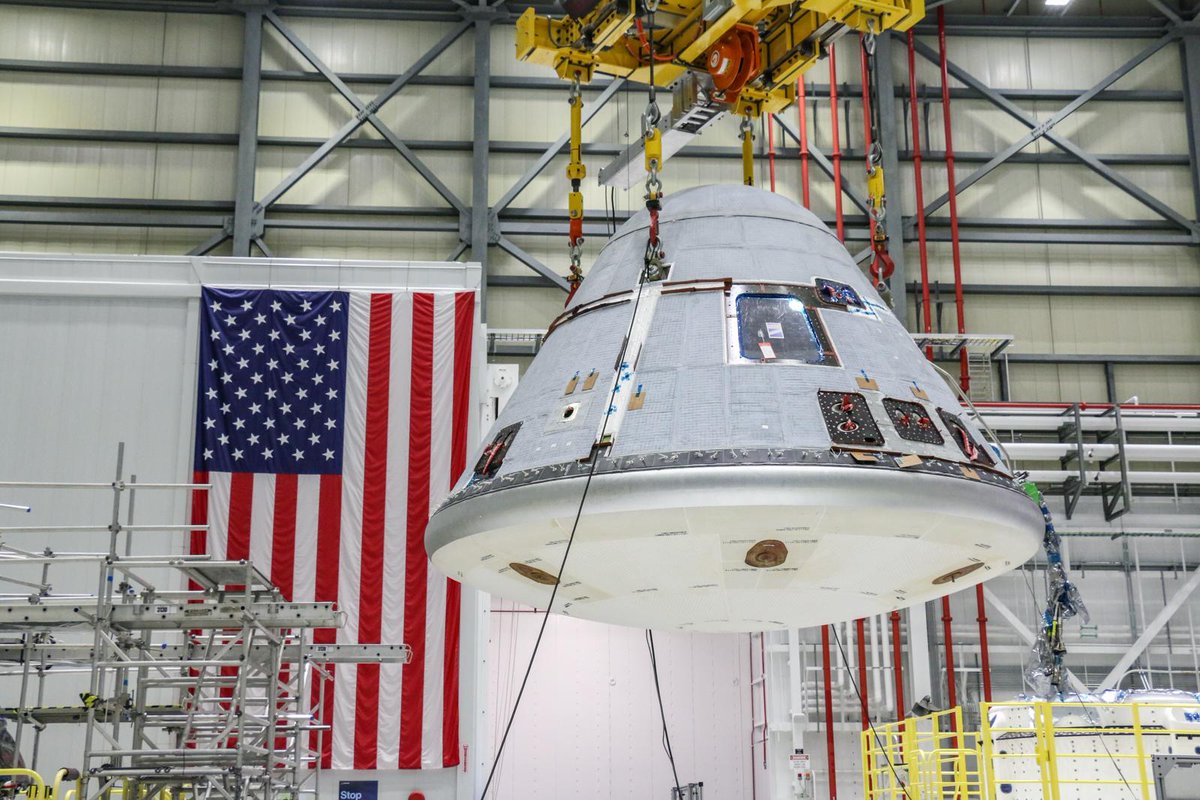Boeing targets a March 25 launch for next Starliner test flight for NASA

Boeing is planning to launch its CST-100 Starliner astronaut taxi on a second test flight on March 25, company officials announced Monday (Jan. 25).
A United Launch Alliance Atlas V rocket will launch the uncrewed spacecraft from Cape Canaveral Space Force Station in Florida, after which Starliner will attempt to rendezvous and dock with the International Space Station (ISS) — something the spacecraft failed to do during its first test flight, called Orbital Flight Test-1 (OFT-1), in December 2019.
The upcoming mission, called Orbital Flight Test-2 (OFT-2), was not originally part of Boeing's itinerary when the company was developing Starliner for NASA's Commercial Crew Program. But after a series of glitches prevented OFT-1 from reaching the ISS and prompted an early landing in New Mexico, NASA and Boeing decided to redo the uncrewed test flight before launching Starliner with astronauts on board.
Related: Boeing's 1st Starliner flight test in photos
The announcement of OFT-2's target launch date comes just one week after Boeing's Starliner passed a key software requalification test, during which Boeing teams "conducted a full software review and several series of tests to verify Starliner's software meets design specifications," Boeing officials said in a statement.
"Boeing also will complete an end-to-end simulation of the OFT-2 test flight using flight hardware and final versions of Starliner's flight software to model the vehicle’s expected behavior before flight," the statement added. Boeing had been criticized for not conducting such an "end-to-end" test for OFT-1 back in 2019, when Starliner failed to reach the correct orbit.

If all goes according to plan with OFT-2, the Starliner spacecraft will perform an orbit insertion maneuver about 31 minutes after liftoff, sending the spacecraft on its way to the ISS, where it is expected to arrive the next day (approximately 26 hours after liftoff).
Get the Space.com Newsletter
Breaking space news, the latest updates on rocket launches, skywatching events and more!
The Starliner will autonomously dock itself at the space station's Harmony module for about a week, during which time the seven-person crew of Expedition 64 will unload any cargo on board and inspect the spacecraft. (Starliner can spend several months in orbit, but this mission will be kept short as it is only a test.) Once its orbital stay at the ISS is over, Starliner will autonomously undock from the station at return to Earth for a parachute-assisted landing in New Mexico.
If Boeing and NASA do not uncover any more big problems with Starliner during the OFT-2 mission, the first Starliner to fly with astronauts on board could follow as early as June. That mission, called Crew Flight Test (CFT), will send NASA astronauts Mike Fincke, Nicole Mann and Butch Wilmore to the ISS for an extended stay. NASA has not announced the duration of the CFT mission, but in 2019 the agency said it would be a long-duration mission that could potentially last for around six months.
The first operational mission to carry astronauts, called Starliner 1, will bring NASA astronauts Jeanette Epps, Sunita Williams and Josh Cassada to the ISS for a six-month stay. That mission is tentatively scheduled for no earlier than December 2021, NASA officials said in a statement.
Email Hanneke Weitering at hweitering@space.com or follow her on Twitter @hannekescience. Follow us on Twitter @Spacedotcom and on Facebook.
Join our Space Forums to keep talking space on the latest missions, night sky and more! And if you have a news tip, correction or comment, let us know at: community@space.com.

Hanneke Weitering is a multimedia journalist in the Pacific Northwest reporting on the future of aviation at FutureFlight.aero and Aviation International News and was previously the Editor for Spaceflight and Astronomy news here at Space.com. As an editor with over 10 years of experience in science journalism she has previously written for Scholastic Classroom Magazines, MedPage Today and The Joint Institute for Computational Sciences at Oak Ridge National Laboratory. After studying physics at the University of Tennessee in her hometown of Knoxville, she earned her graduate degree in Science, Health and Environmental Reporting (SHERP) from New York University. Hanneke joined the Space.com team in 2016 as a staff writer and producer, covering topics including spaceflight and astronomy. She currently lives in Seattle, home of the Space Needle, with her cat and two snakes. In her spare time, Hanneke enjoys exploring the Rocky Mountains, basking in nature and looking for dark skies to gaze at the cosmos.









